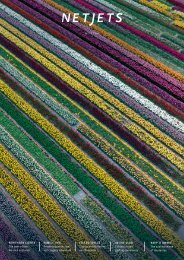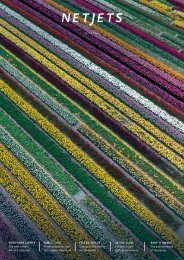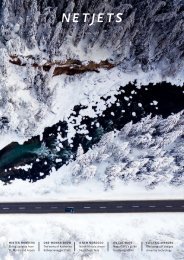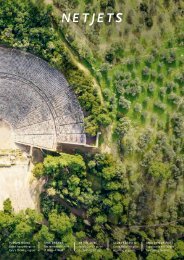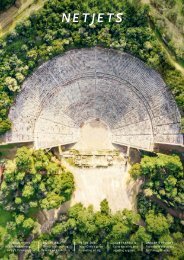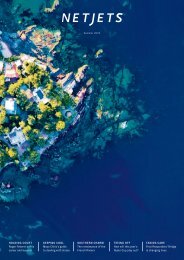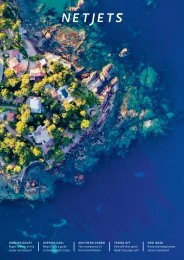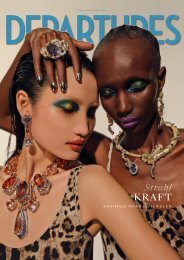Departures Middle East Summer 2019
Create successful ePaper yourself
Turn your PDF publications into a flip-book with our unique Google optimized e-Paper software.
DEPARTURES TRAVEL CULTURE TRIP<br />
22<br />
From left: Ponte City tower in downtown Johannesburg is now a popular movie<br />
backdrop; a Maboneng habitué; bottom: street art in Maboneng<br />
URBAN BLIGHT DOESN’T have any<br />
beneficiaries – except skateboarders<br />
and graffiti artists. Bheki Dube<br />
grew up a skateboarding kid in<br />
Johannesburg in the 2000s, as the<br />
sprawling city, one of the largest<br />
and richest in Africa, underwent<br />
a staggering free fall into anarchy,<br />
violence and population flight.<br />
“The city was a blank canvas,”<br />
said Dube, who at the time lived in<br />
downtown Johannesburg, where<br />
hijacked skyscrapers, abandoned<br />
hotels and artist-run squatter<br />
colonies proliferated while South<br />
Africa chaotically transitioned<br />
from apartheid rule. “You could go<br />
anywhere you wanted, if you were<br />
brave enough.”<br />
Today, while still facing significant<br />
social challenges, Johannesburg has<br />
given birth to one of the most robust<br />
arts scenes in Africa, owing greatly to<br />
the near-apocalypse of its inner core.<br />
The centre of the decade-long revival<br />
is Maboneng, a now-thriving district<br />
of galleries, restaurants and shops<br />
that is drawing an international crowd<br />
looking to experience the country’s<br />
contemporary culture. “Maboneng is<br />
where Brooklyn hip meets authentic<br />
Africa,” Mark Lakin, cofounder of<br />
Epic Road, a bespoke travel company<br />
specialising in Africa, told me. “It’s an<br />
example of a rising black middle class<br />
amid grassroots arts and innovation.”<br />
Roughly ten square blocks,<br />
Maboneng comprises an old industrial<br />
area next to a pothole-filled road<br />
leading directly to Johannesburg’s<br />
legendary gold mines. Its name, a<br />
Sesotho word meaning “place of<br />
light”, says more about the aspirations<br />
of its inhabitants than the actual<br />
setting: highway overpasses and<br />
hulking warehouses loom over the<br />
cafes along Fox Street, the principal<br />
thoroughfare.<br />
“It was a ghost street when I arrived<br />
in 2009,” said Marcus Neustetter,<br />
codirector of the Trinity Session,<br />
which produces public art. “Over a<br />
quick period we saw a change.” It<br />
started with the opening of Arts on<br />
Main, a complex of brick industrial<br />
buildings converted into art spaces<br />
and shops. William Kentridge, one




